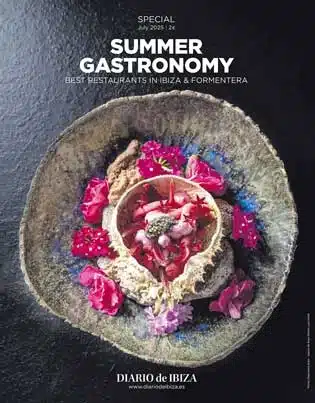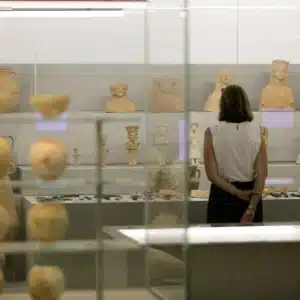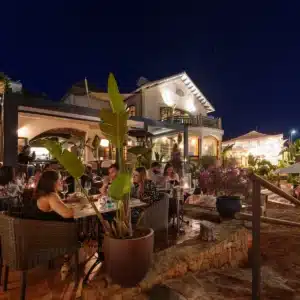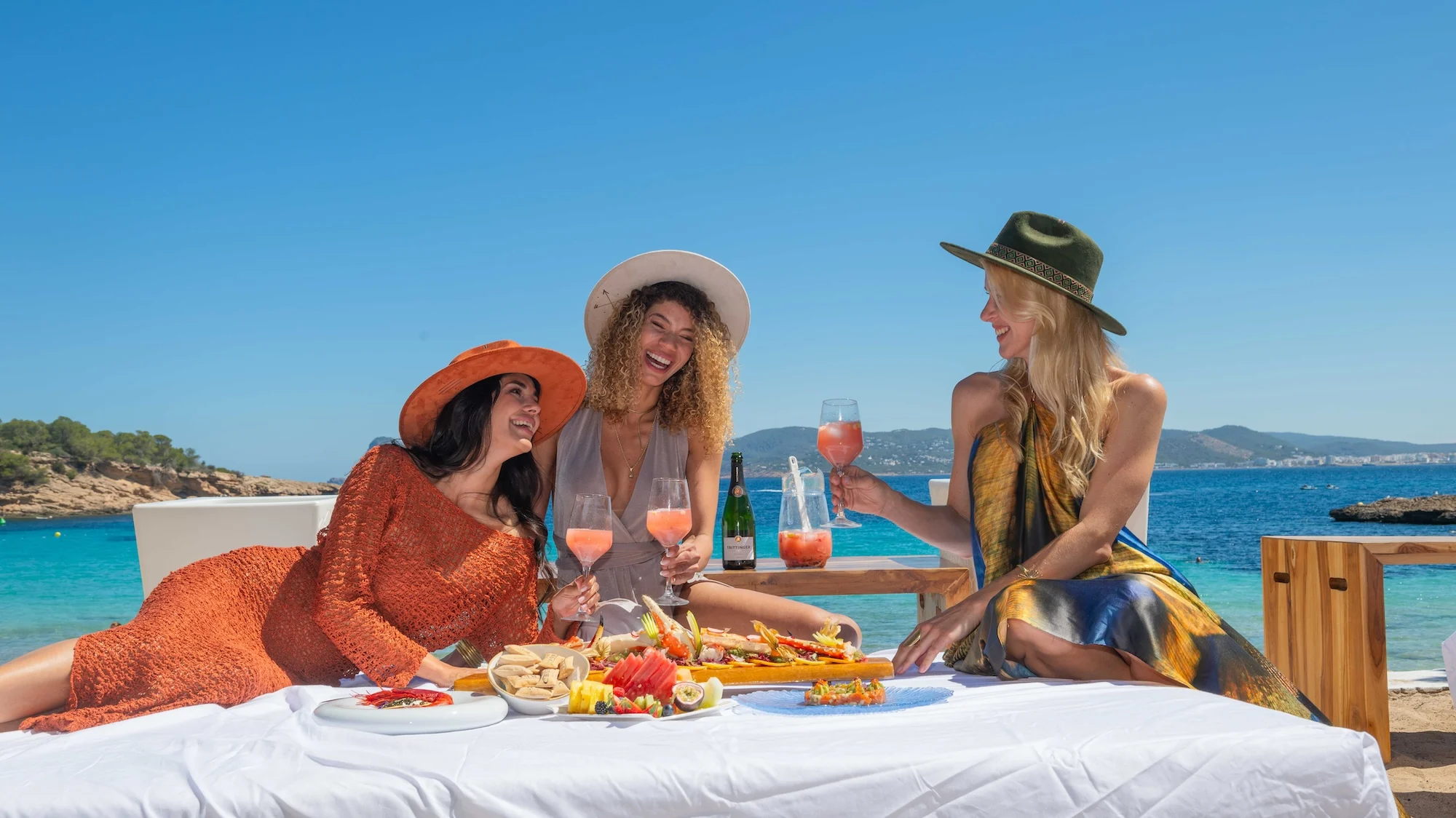If you are looking to explore the quieter, more authentic side of the Pitiusas Islands, do not miss the chance to dive into the unique character of Formentera’s three main villages.
Far from being just sleepy hamlets, El Pilar de la Mola, Sant Francesc Xavier and Sant Ferran de ses Roques each offer their own rhythm, rooted in tradition and inspired by the natural beauty that surrounds them.
El Pilar de la Mola: Formentera’s wind-swept sanctuary
Step into a village where time slows down and the landscape stretches wide to meet the sea. Perched on a plateau at the far eastern end of the island, El Pilar de la Mola is the highest point in Formentera—both geographically and spiritually.
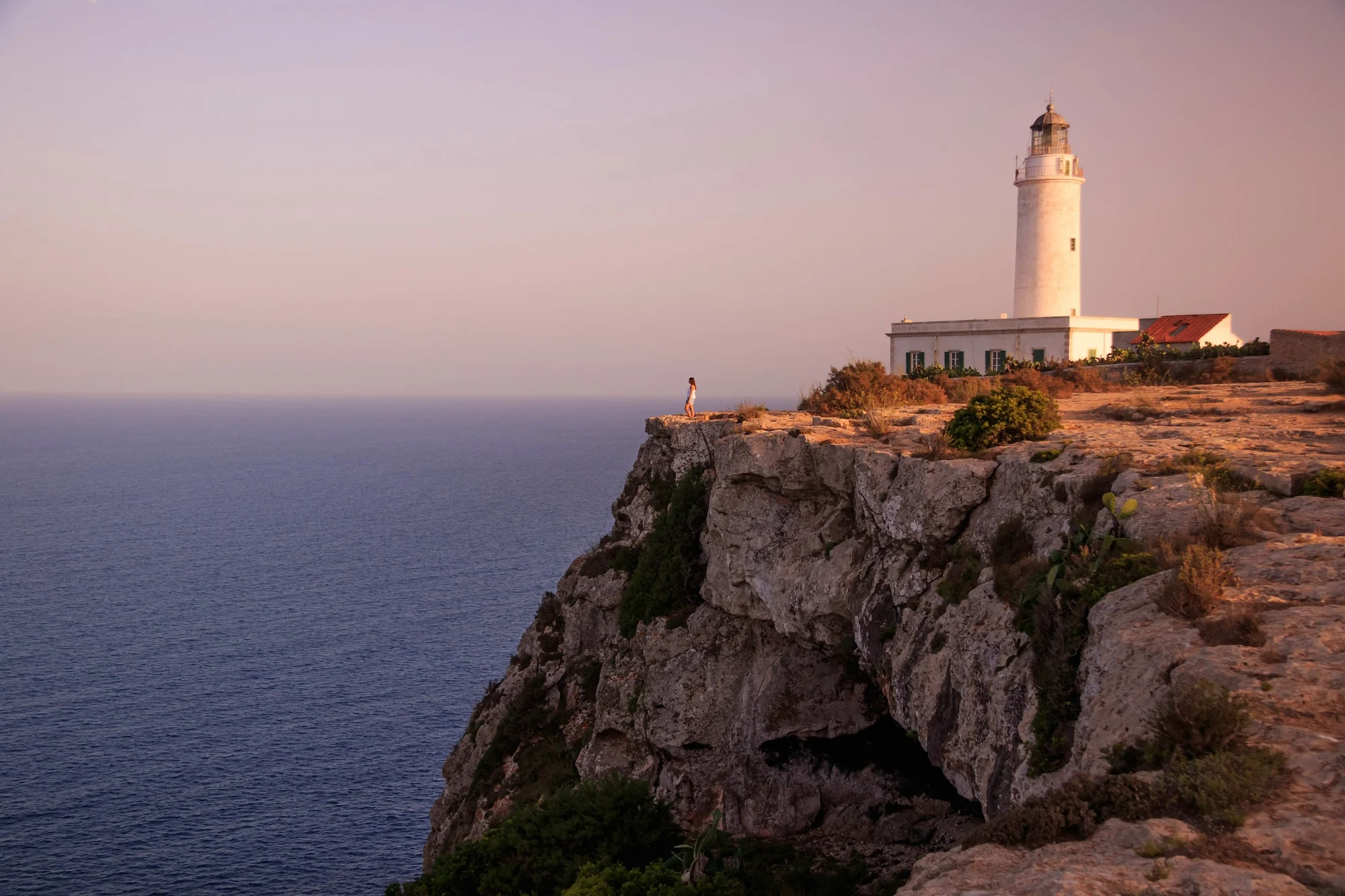
This is a state of mind. Artists, poets and peace-seekers have long been drawn here, inspired by the light, the views, and the sense of solitude. At the heart of the village is the whitewashed Church of El Pilar, a simple 18th-century structure with a rare porch—a local quirk that sets it apart from other island churches.
But the real magic begins on market days. Twice a week from May to October, the La Mola Craft Market transforms the village into a buzzing hive of creativity. It is where local artisans sell handmade jewellery, ceramics, paintings and natural cosmetics. There is live music, laughter, and a sense that you have stumbled into a Balearic dream.
Do not leave without visiting the La Mola Lighthouse, dramatically set on the edge of the cliffs. With the sea roaring below and the sky stretching endlessly above, it is no wonder Jules Verne featured it in one of his novels. There is a monument here to the writer, but the real tribute is the view itself.
Sant Francesc Xavier: the beating heart of Formentera
As the island’s capital, Sant Francesc Xavier is the beating heart of Formentera—stylish, sociable and full of small surprises. This is the first stop for many visitors, and it rarely disappoints.
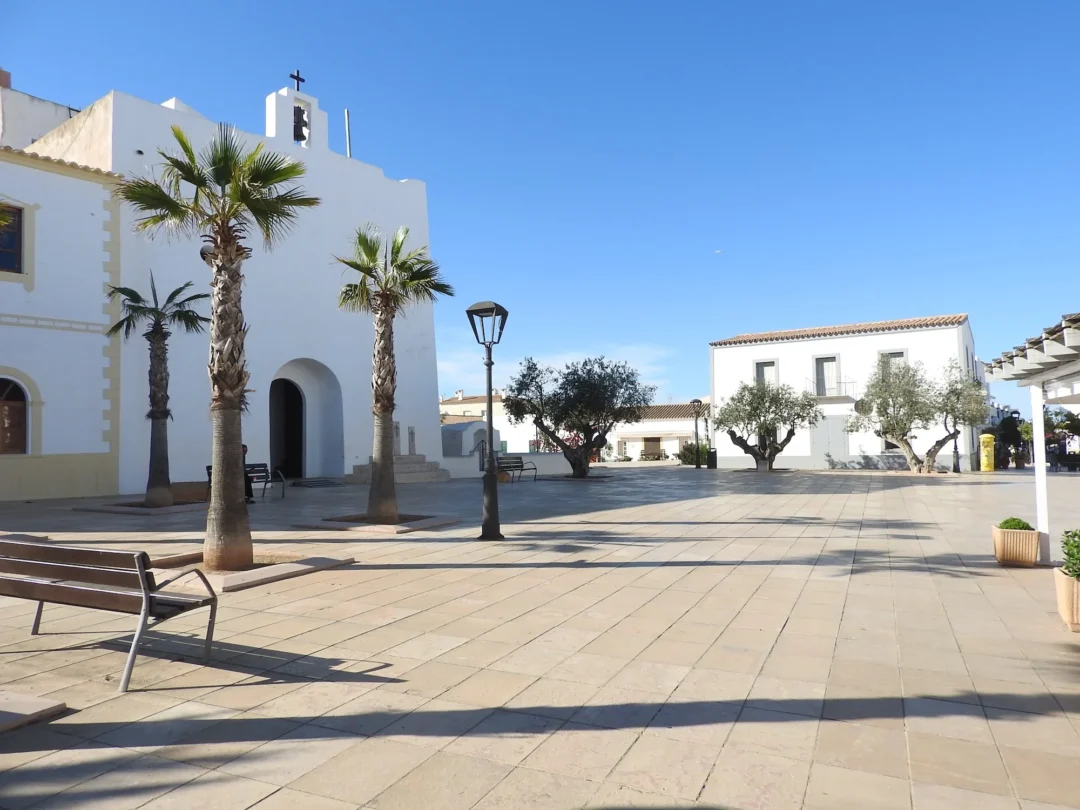
Stroll through the pedestrianised streets and you will find boutique fashion stores, artisan bakeries, open-air cafés and shady squares where locals linger over coffee. The village offers the perfect blend of history and modern-day island life.
The iconic Sant Francesc Church, built in the 18th century, once served as a refuge against pirate attacks. Its thick walls and iron doors speak of a turbulent past, but today it radiates calm. Next door, the Ethnographic Museum of Formentera is small but fascinating—an ideal place to understand how islanders once lived, farmed and fished with incredible resilience.
If you visit in July, do not miss the Sant Jaume Festivities, when the streets come alive with music, fireworks, parades and traditional dancing. It is the moment when the soul of Sant Francesc spills joyfully into the open.
Sant Ferran de ses Roques: the bohemian rebel
Where the other villages speak in whispers, Sant Ferran sings out loud. This is Formentera’s artistic rebel, where creativity and community meet under the stars.
Once a hippy stronghold in the 1960s and 70s, Sant Ferran still keeps that countercultural flame alive. You will feel it in the air when live bands play in the square at night, and in the laughter that spills from legendary taverns like Fonda Pepe, where artists, writers and wanderers still gather to swap stories.
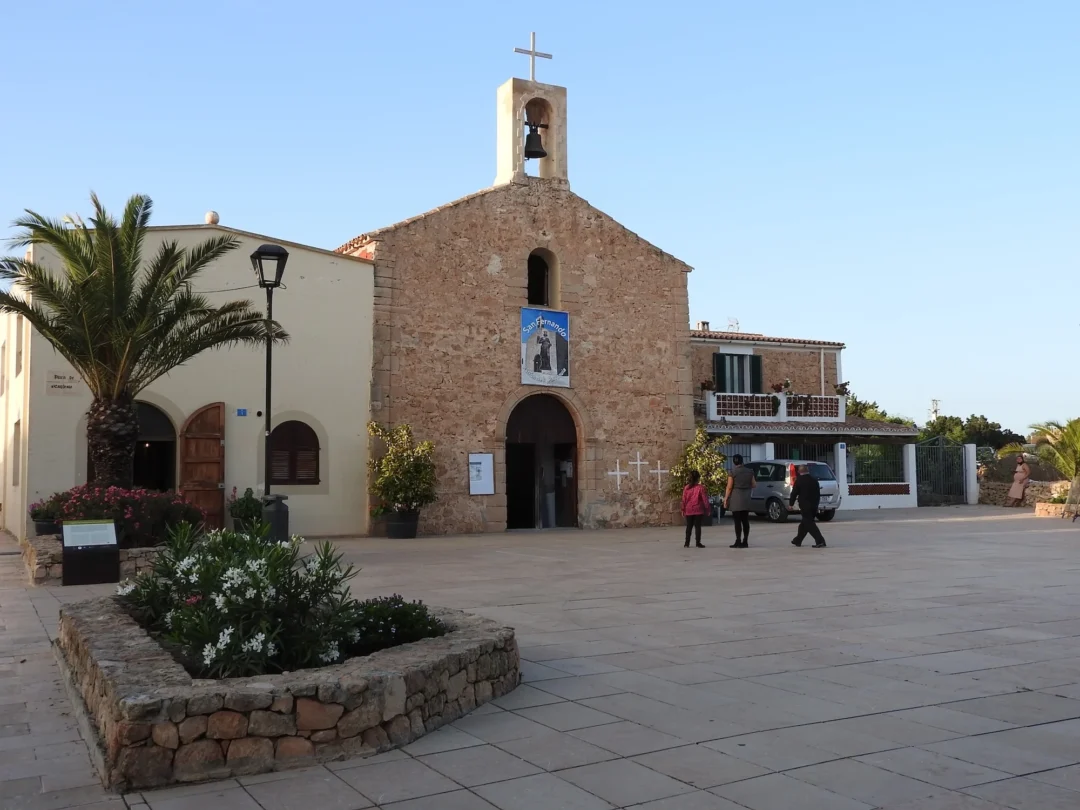
At the centre of it all is the Church of Sant Ferran, the smallest parish church on the island and the most quietly beautiful. The real show, however, begins as the sun sets and the square fills with people. From June to October, the Sant Ferran Night Market is a celebration of local talent—painters, sculptors, jewellers and street performers all adding to the vibe.
The village also has a dynamic food scene. From thin-crust pizzas at Macondo to farm-to-table delights at Blat Picat, it is a paradise for those who like their meals with a side of soul.
Why you should explore Formentera’s villages
Formentera may be famous for its beaches, but the soul of the island lives inland—in its quiet churches, colourful markets, and village squares filled with stories.
These Formentera’s villages are more than dots on a map; they are three distinct chapters in the island’s narrative. El Pilar de la Mola is poetry in limestone and lavender. Sant Francesc is the storybook capital where history breathes gently through its streets. And Sant Ferran? That is the beat, the art, the voice of the island’s rebel heart.
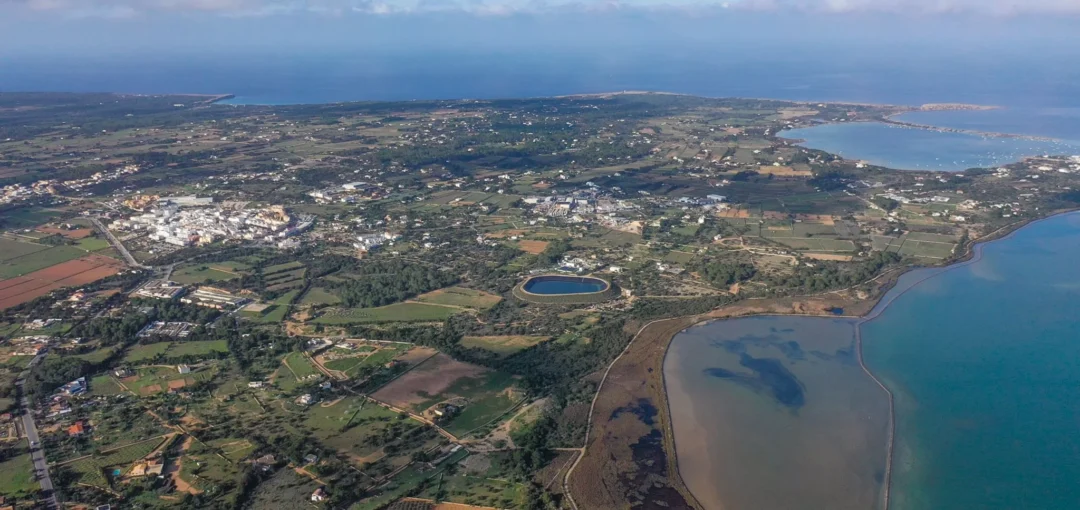
So next time you visit Formentera, leave the beach towel behind for a day and follow the signs to the villages. You will return with more than souvenirs—you will return with stories.
Plan your visit
- Best time to explore: spring through autumn, when the artisan markets are in full swing and the weather is perfect for walking.
- Getting around: rent a bicycle or scooter to make the most of the short distances and beautiful rural roads.
- Local tip: visit El Pilar on a Wednesday or Sunday afternoon to catch the market in full swing, and stay for the sunset at the lighthouse.

